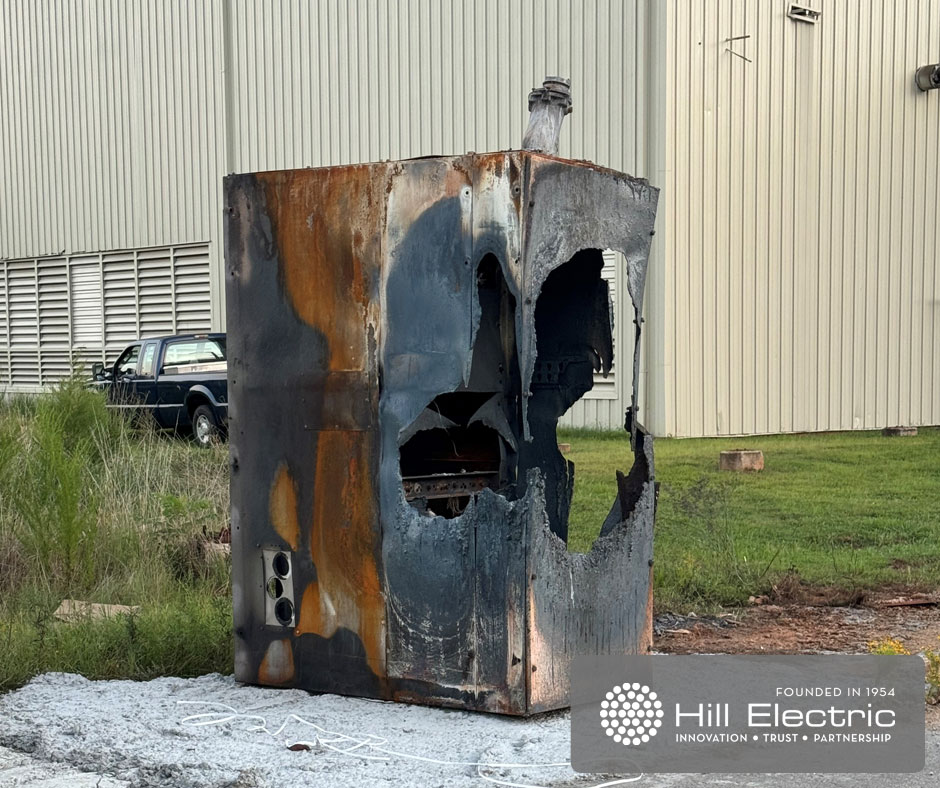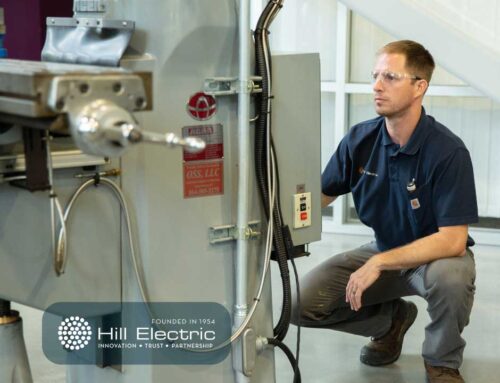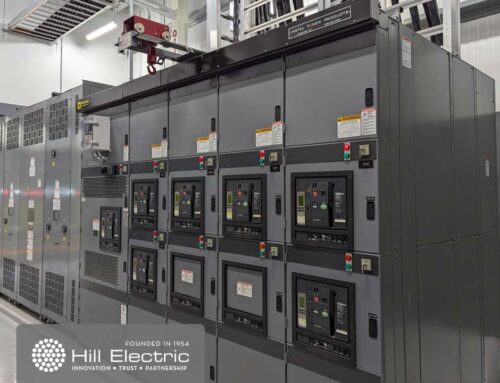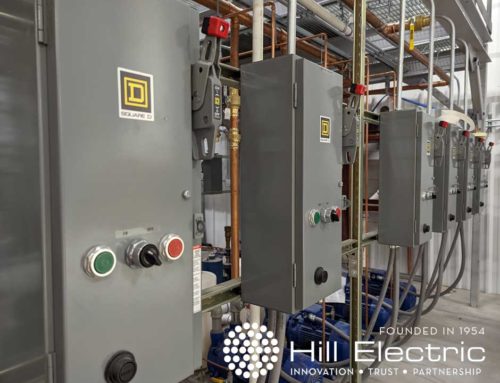In industrial manufacturing, ensuring electrical safety is paramount. Yet, occasionally, a combination of poor maintenance, lack of protective measures, and outdated equipment can lead to catastrophic failures. Recently, a facility that manufactures construction products experienced a major failure in its medium-voltage (MV) electrical system resulting in a dangerous arc flash event. This situation was handled in partnership with Instel, a trusted electrical services provider, and Hill Electric Company (HEC), who both played crucial roles in the recovery process.
What Happened?
A catastrophic failure occurred in a 15kV system, leading to an arc flash—a dangerous and sudden release of electrical energy due to a fault or short circuit in high-voltage equipment. In this case, a breakdown of the insulated equipment led to an arc flash between phases. The intense energy released caused significant damage to the panel and equipment, so much so that experts on site described it as unprecedented.
The cause was poor maintenance of the overcurrent protection devices for the power distribution system. Specifically, the backup power for the protective device controls was not operational. This resulted in the protection device not opening the circuit, stopping the contribution of energy to the fault. The resulting arc flash took mere seconds to unfold but caused damage that would cost an estimated $600,000 to repair.
The Recovery Effort
In response to the failure, a comprehensive recovery effort was immediately initiated to restore the plant’s power and safety. Hill Electric Company (HEC) and Instel, who were already collaborating on the project, took swift and decisive action to replace damaged feeders, re-terminate cables, and upgrade the equipment. Here’s a breakdown of their contributions:
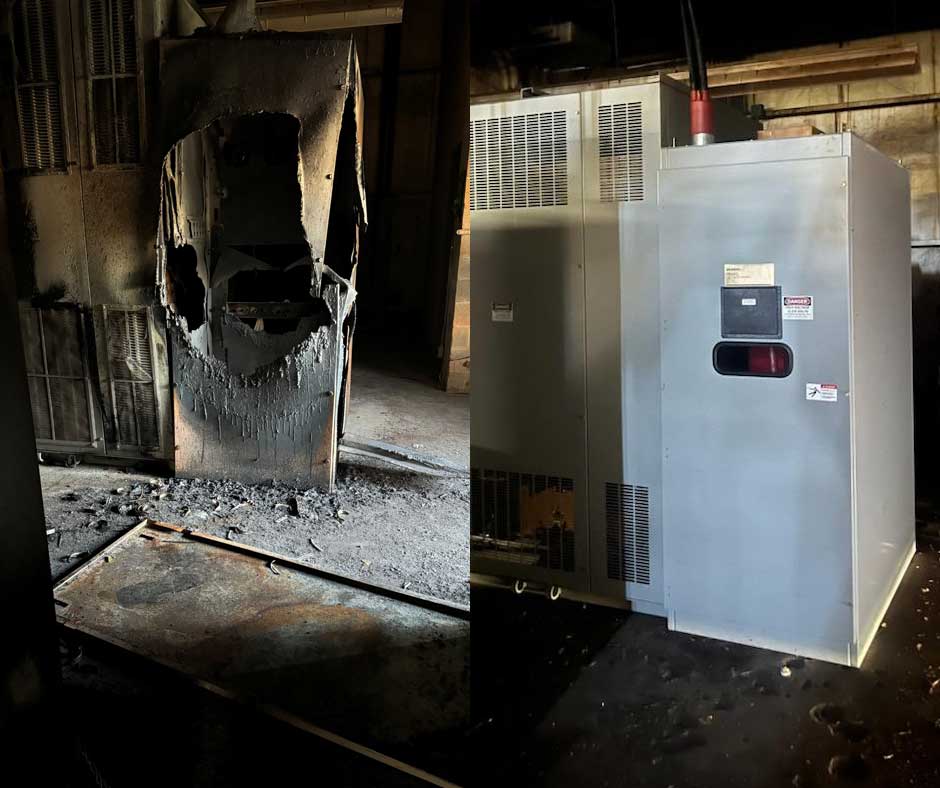
Hill Electric’s Role:
- Generator Connection: Assisted Instel in connecting a generator to one of the switchgears to provide temporary lighting in the warehouse and office areas.
- 15kV Feeder Installation: Installed a new 15kV feeder from the outdoor E House breaker to the pole.
- Cable Replacement: Removed the faulty 15kV MV IAC cable leading to the boiler house and installed new cable in the existing cable tray.
Instel’s Role:
- Testing and Assessment: Conducted thorough testing of the existing cables and unit substations, including switches, transformers, and breakers. New
- Installations: Installed a new 15kV MV switch and a 2000 kVA unit substation transformer in the boiler house.
- Terminations and Upgrades: Performed terminations for the new 15kV cable/feeders and removed 15kV potheads, replacing them with newly terminated cables.
The recovery process is complete. Power has been restored to the facility. With the available resources of manpower, equipment, and knowledge, power was restored in less than a week.
The Dangers of Arc Flash
An arc flash is one of the most dangerous electrical hazards that can occur in industrial settings. It is caused by a sudden release of electrical energy, often due to a fault or short circuit. Here are some key points about arc flashes:
- Causes: Arc flashes can result from various factors, including faulty wiring, equipment failure, accidental contact with live wires, dropping uninsulated tools, and conducting live work on damaged equipment.
- Effects: The heat from an arc flash can reach up to 35,000 degrees Fahrenheit, vaporizing metal and sending shrapnel flying. It can cause severe burns, injuries, and even fatalities.
- Impact on Operations: Beyond the risk to human life, arc flashes can lead to significant financial losses. In the case of this plant, the estimated cost of repair is $600,000—a stark reminder that safety measures should never be compromised to save costs.
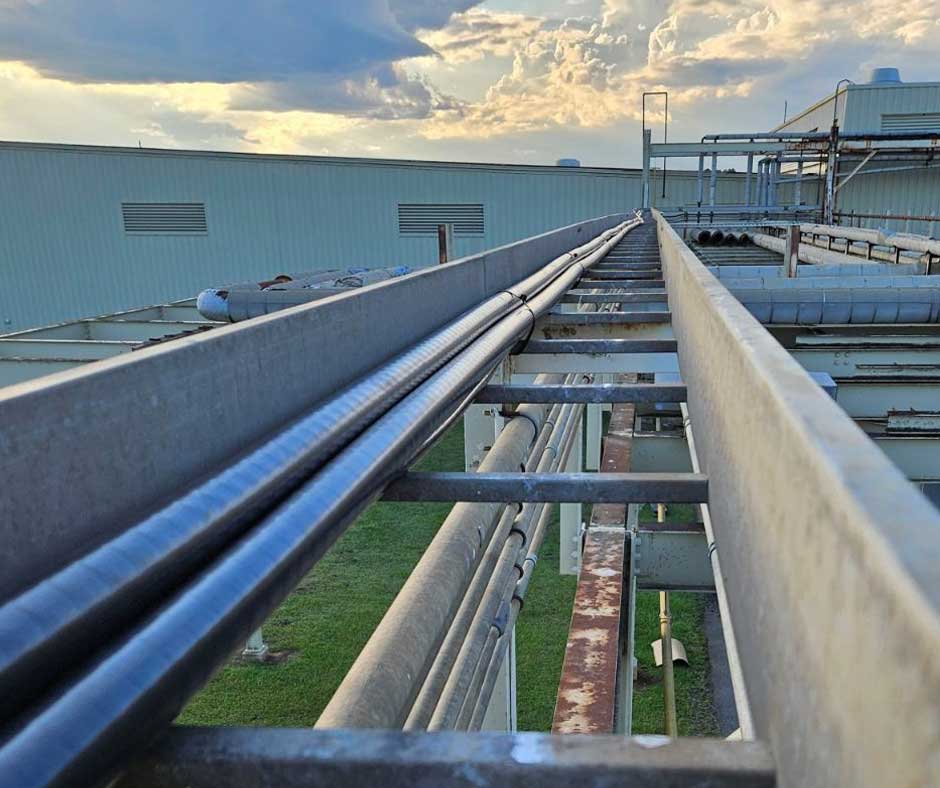
Tips to Prevent Arc Flash Incidents
Ensuring electrical safety in a manufacturing facility requires a proactive approach. Here are some essential tips to prevent catastrophic failures like the one that led to this arc flash:
- Regular Maintenance and Inspections: Conduct regular maintenance checks and inspections of all electrical systems, including cables, transformers, and switchgear. Early detection of wear and tear or faulty components can prevent failures.
- Install Protective Equipment: Use protective devices, such as fuses and breakers, to minimize the impact of electrical faults. These devices can detect faults and interrupt the power supply before an arc flash occurs.
- Use Qualified Personnel: Ensure all electrical work is carried out by qualified professionals trained in arc flash safety. Proper training reduces the likelihood of human error, which is a significant cause of arc flash incidents.
- Implement Safety Protocols: Develop and implement strict safety protocols for live work, including de-energizing equipment before maintenance and using insulated tools.
- Upgrade Aging Infrastructure: Outdated electrical systems are more prone to failures. Regularly review and upgrade aging infrastructure to meet current safety standards and regulations.
- Conduct Arc Flash Risk Assessments: Periodically perform risk assessments to identify potential hazards and take corrective action to mitigate risks.
- Provide Protective Clothing and Equipment: Ensure that workers wear appropriate personal protective equipment (PPE) designed for arc flash hazards. This can significantly reduce injury severity in the event of an incident.
Conclusion
The recent arc flash incident at this facility serves as a critical reminder of the importance of electrical safety in industrial environments. Cutting corners on maintenance and safety measures may save money in the short term but can lead to catastrophic failures that are costly and dangerous in the long run. By partnering with experts like Instel and Hill Electric Company, manufacturers can ensure that their electrical systems are safe, reliable, and efficient, minimizing the risk of arc flashes and other electrical hazards.
Protect your people, your plant, and your future by investing in safety and maintenance today.

